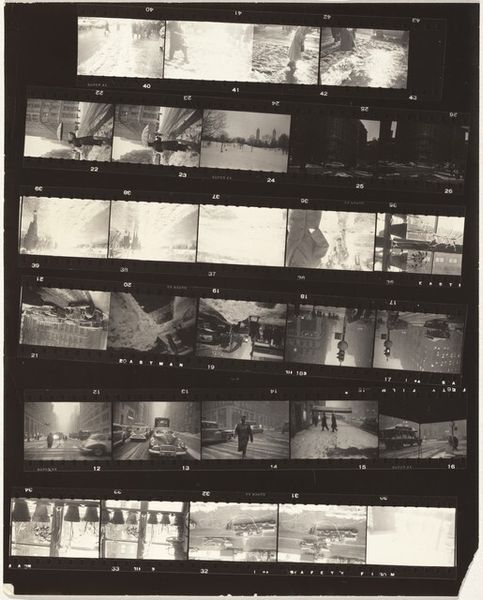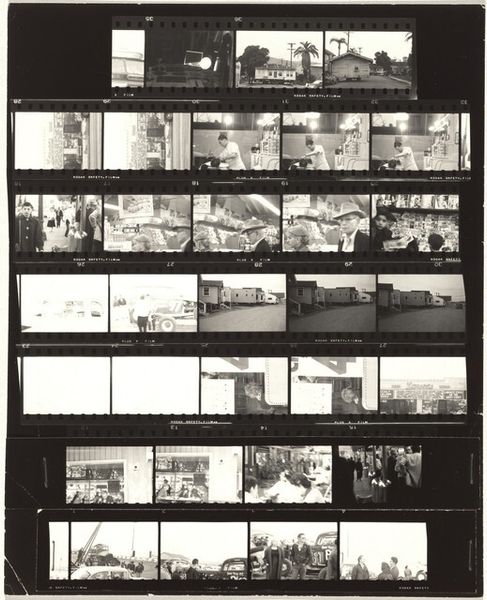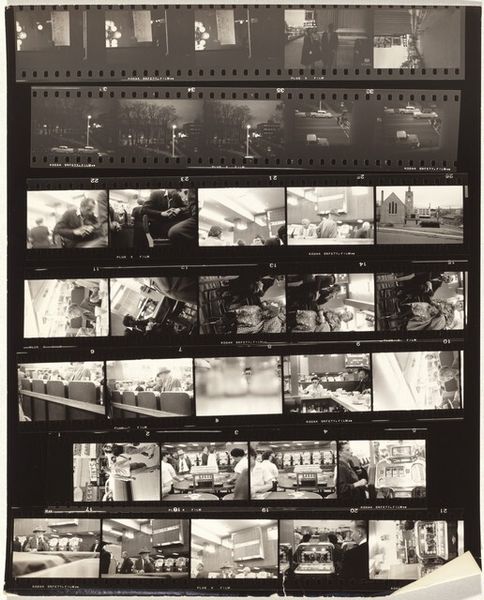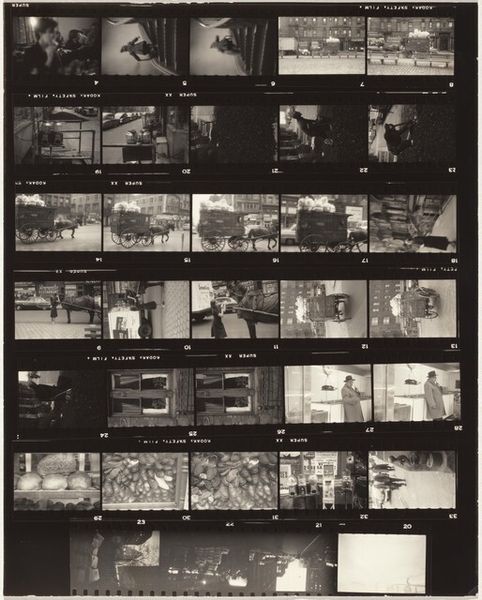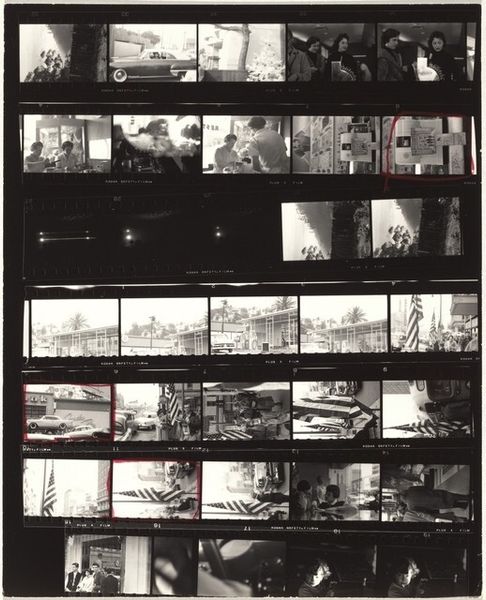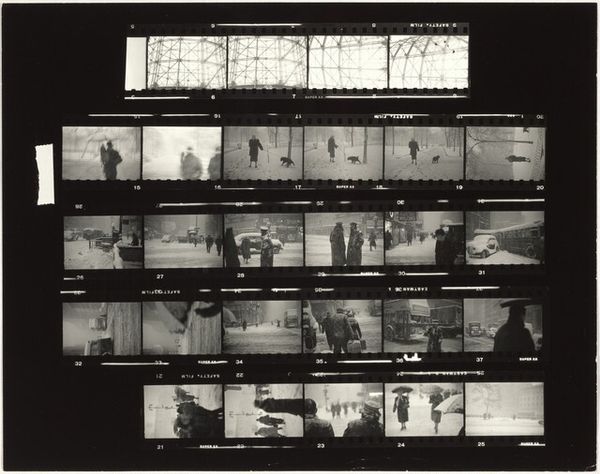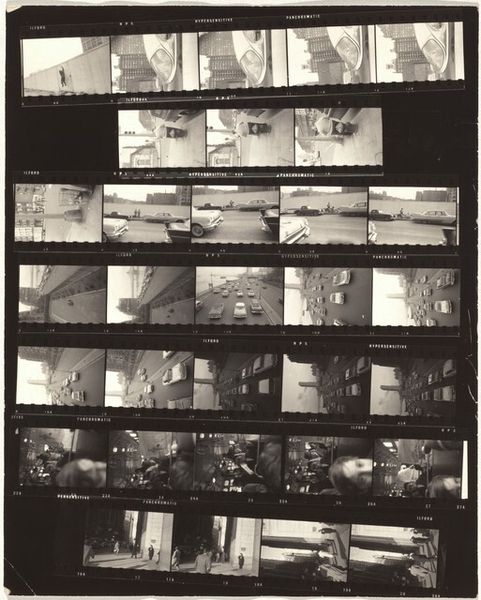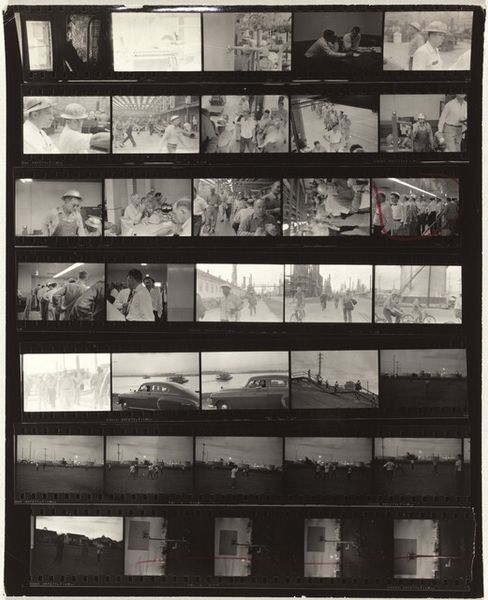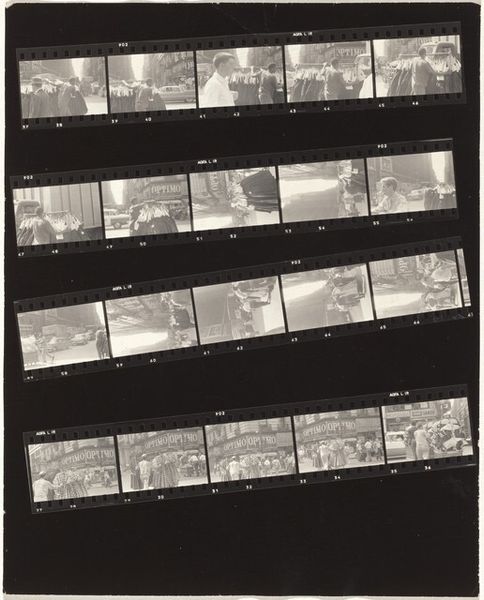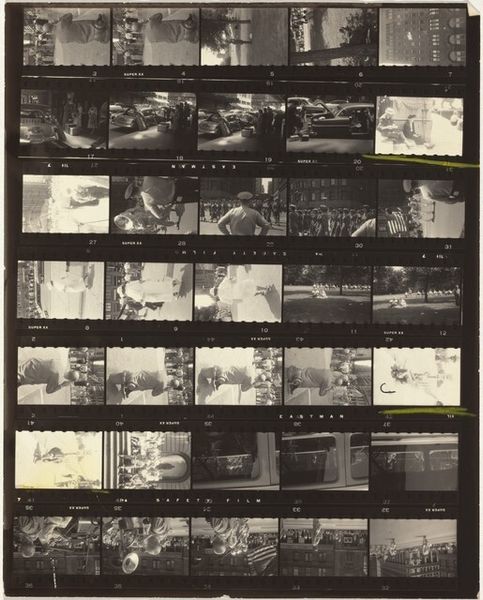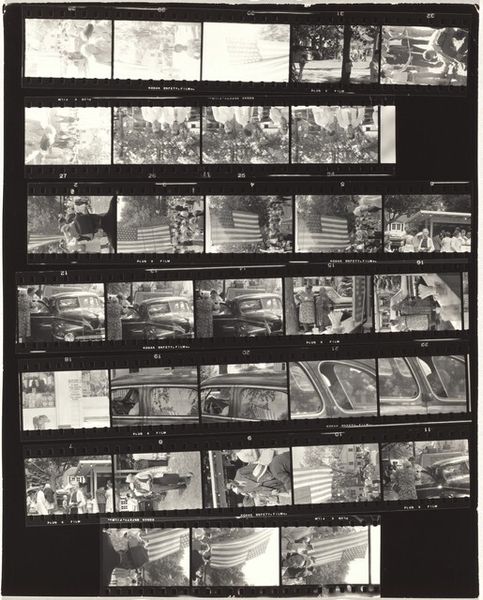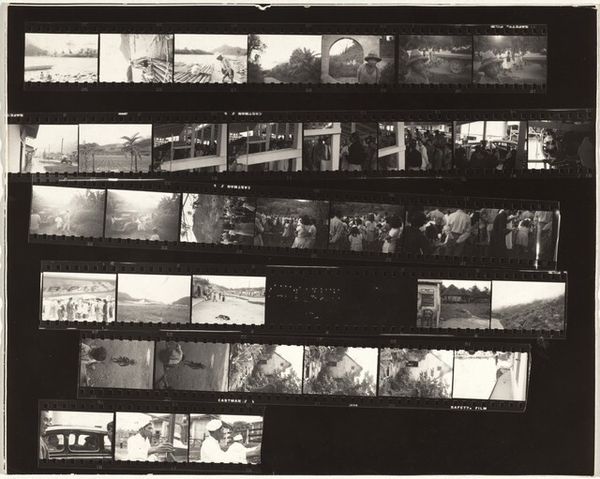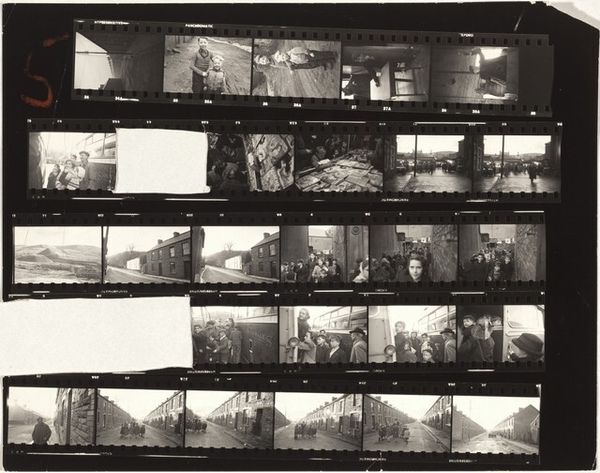
photography, gelatin-silver-print
#
black and white photography
#
sculpture
#
black and white format
#
street-photography
#
photography
#
gelatin-silver-print
#
monochrome photography
#
cityscape
#
monochrome
#
modernism
#
realism
#
monochrome
Dimensions: overall: 25.3 x 20.5 cm (9 15/16 x 8 1/16 in.)
Copyright: National Gallery of Art: CC0 1.0
Editor: Robert Frank’s gelatin silver print, "Guggenheim 433--Los Angeles," created between 1955 and 1956, presents the viewer with a sequence of urban scenes, almost like a filmstrip. It feels fragmented and a bit overwhelming, with so much competing for my attention. What do you see in this piece? Curator: This image speaks volumes about the production of urban space itself. Consider the gelatin silver print: the very material is mass-produced, linking it to industrial processes. Frank documented LA using a tool – the camera – born of manufacturing, thus creating art. This artwork points out the process by which America saw and constructed itself through materials, both photographic and concrete. How do you interpret the different images in this frame? Editor: They’re diverse. Some are seemingly banal street scenes, others focus on figures, or rather sculptural stand-ins in commercial displays. It doesn't read as a coherent narrative, more like a series of unconnected observations. Curator: Exactly. The incoherence, as you call it, challenges notions of photographic truth. It showcases photography not as a purely representational medium, but as a crafted object resulting from a specific, commercial manufacturing of photographic processes. We are presented with reality fractured and reassembled. Can we even call that "real?" What do we learn when something so tied to reproduction, a photograph, shows the viewer a fractured view of its world? Editor: I never considered the way Frank’s method here mirrored the city itself, which is also a kind of fractured experience… fragmented and full of reproductions and advertisements. Curator: Indeed. The materiality and production techniques are inextricably linked to the work’s commentary on American society. We see a consumer society built from fragments, commodified into something that no longer has anything ‘real’ within. Editor: That makes the title even more striking - specifically naming a place to call attention to the lack of specificity within. Thanks, I’m going to have to think about materials a lot more in relation to the artwork from now on! Curator: And that’s the beauty of looking closely! Materiality can often unlock unseen narratives.
Comments
No comments
Be the first to comment and join the conversation on the ultimate creative platform.
